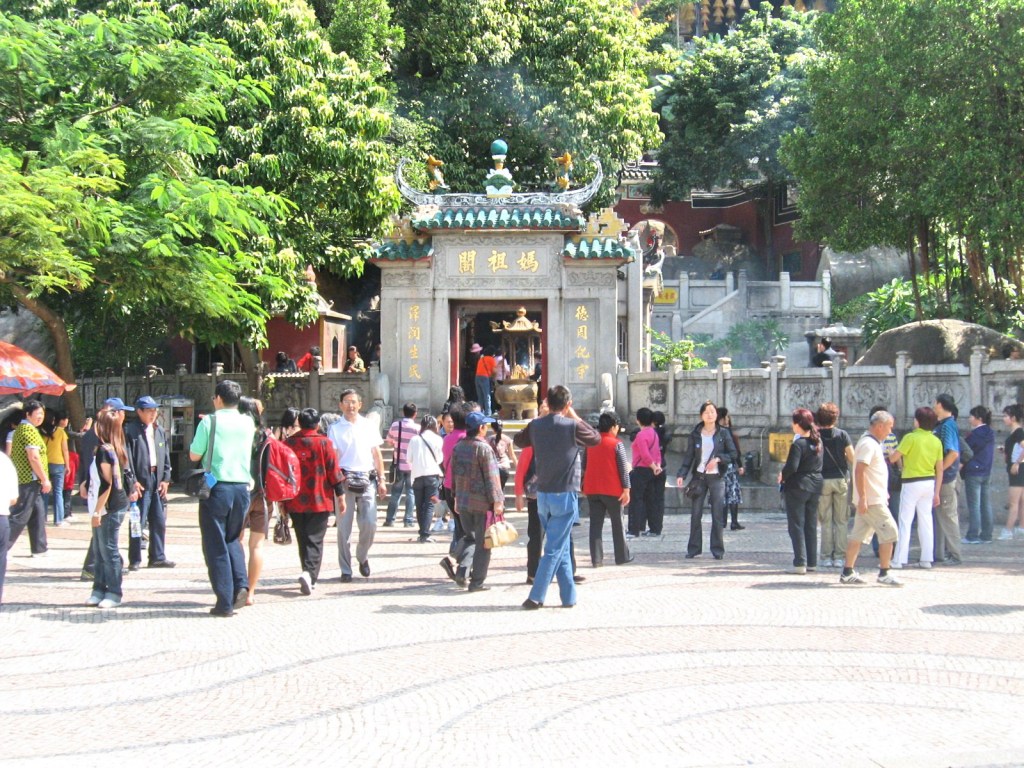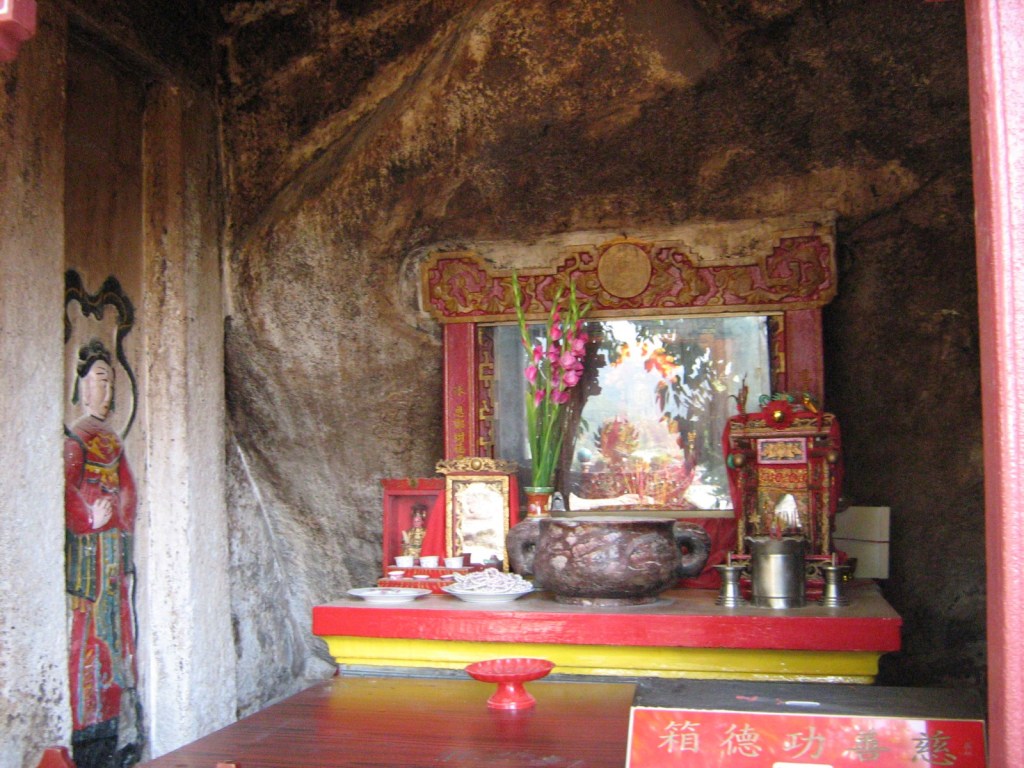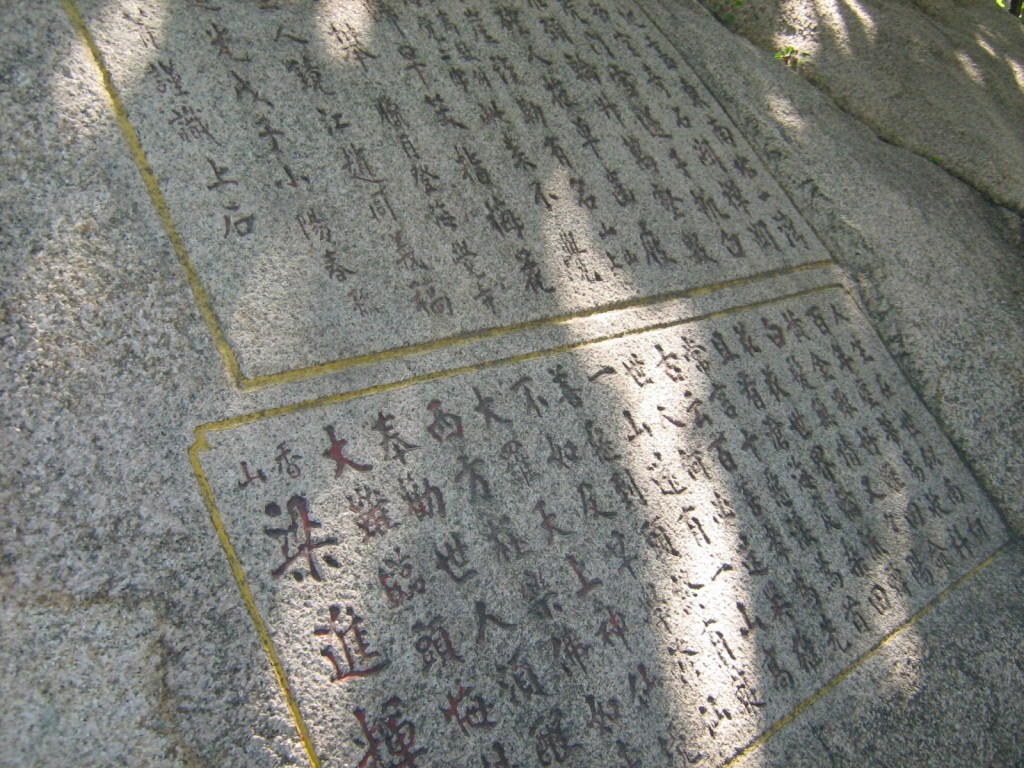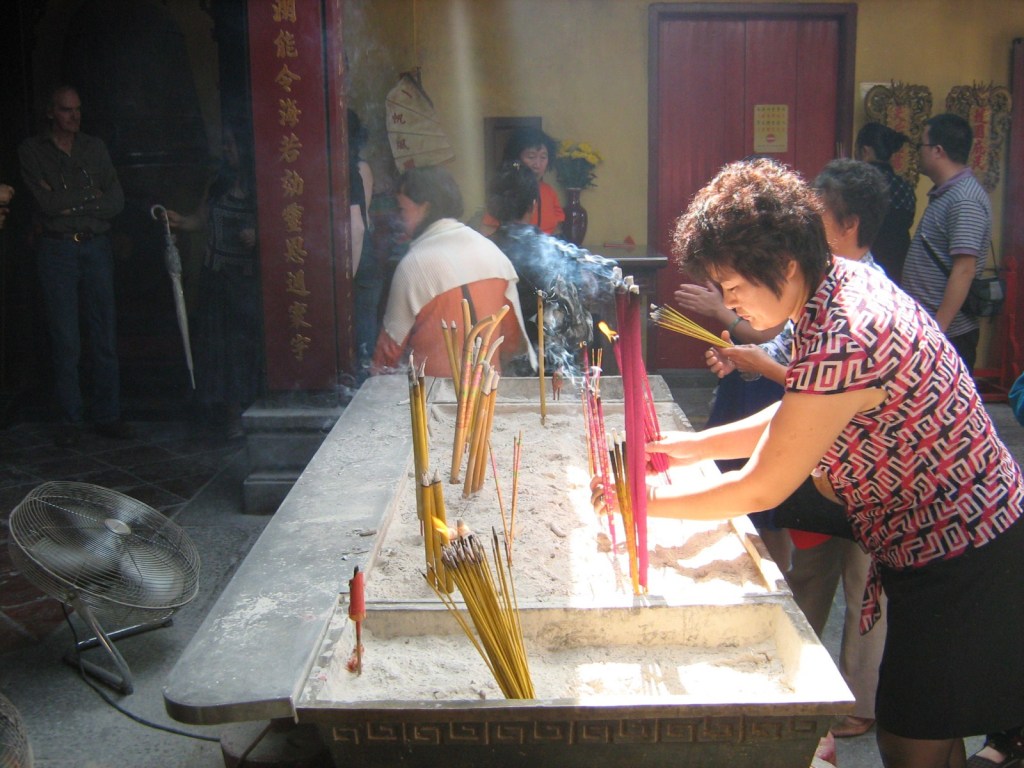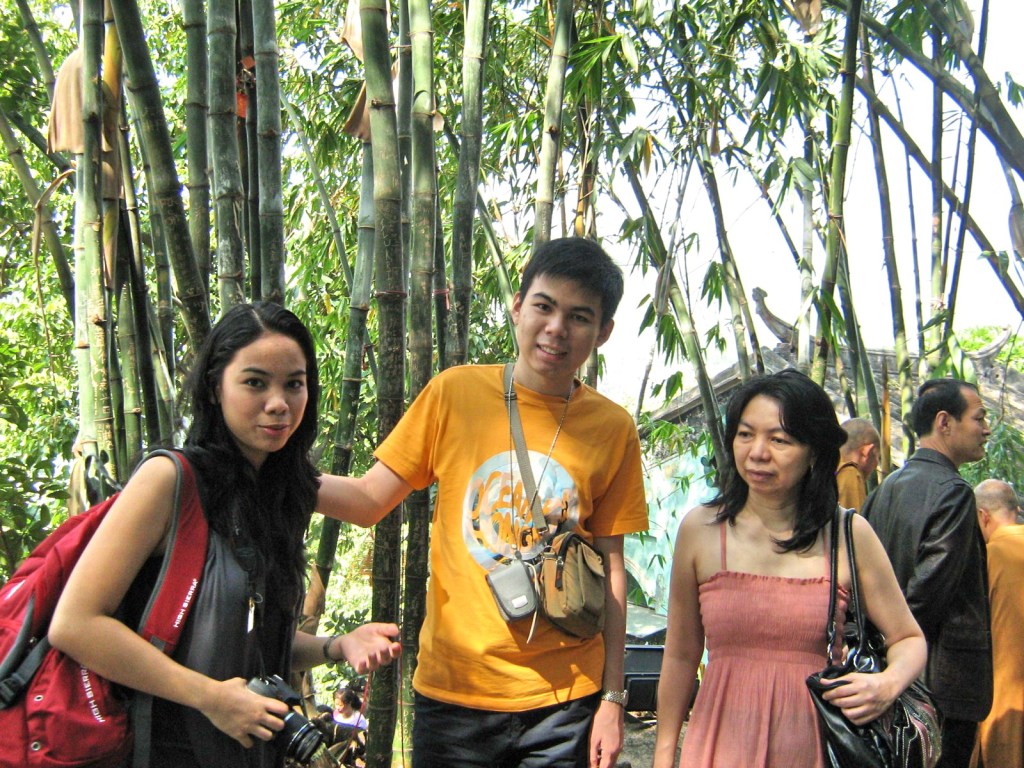A-Ma Temple, situated on the southwest tip of the Macau Peninsula, halfway up the western slope of Barra Hill, is one of the oldest and most famous Taoist temples in Macau. Also known as Barra Temple, Tianhou Temple, Juehai Temple, and Zhongjue Buddhist Temple, it is dedicated to A-Ma (meaning “Honored Mother”). Also called Mazu or Tin Hau, she is a much-revered Taoist goddess who is also the patron of seafarers and fishermen and the Queen of Heaven. In fact, the name Macau is thought to have been derived from A-Ma-Gau (meaning “Bay of A-Ma”).
The temple was originally built in 1488 during the Ming Dynasty but the oldest surviving structures date to 1573. The temple was damaged by fire in 1974 and restored in 1975. It was once again restored in 1987, 1996 and 1997 by the Cultural Institute. In 2005, the temple became one of the designated sites of the Historic Center of Macau enlisted in the UNESCO World Heritage List.
The temple consists of a prayer hall, 4 pavilions (Hongren Hall, Zhansuo Hall, Zhengjue Hall and Kun Iam Hall) and courtyards built into the boulder-strewn hill and connected by winding paths through traditional moon gates and miniature gardens. It is believed that the Hongren Hall has the longest history in the complex. Across the temple is the Maritime Museum.
Three of the temple’s 4 pavilions are dedicated to A-Ma and contain some fine statues of the goddess together with a model of a junk with cannons, brass vessels and chapels to Buddhist and Taoist gods. On boulders are carved red characters invoking the gods or repeating a prayer.
The temple’s main prayer hall, at the roadside, is also called First Palace of the Holy Mountain. First built in 1605 and rebuilt in 1629, this granite structure has lattice windows and up-pointing roof ridges. and there are other pavilions and altars ranging up the hillside and connected by a flight of steps.
Aside from us tourists, there were also a lot of devotees thronging to this temple, giving thanks to A-Ma and praying for good fortune by making offerings and burning lots of incense. We all entered the temple through the Memorial Arch. At the entrance is a large boulder with a colored relief of a lorcha (a traditional sailing junk of the South China Sea).
Winding paths connect the different shrines of the complex. We first reached the Hongren Hall (the Great Mercy Hall or Hall of Benevolence), dedicated to A-Ma. At its gate are couplets engraved on stone. Believed to have been constructed in 1488, its 4 walls are made of granite and brick and the altar is placed under a roof covered with green glazed roof tiles and ornamental roof ridges. Some relief engravings, such as water monsters and fairies, are found on the wall beside the altar.
Further ahead is the Hall of Avalokitesvara (Goddess of Mercy), constructed in a simple style using mainly using bricks and stone. The Zhengjiao Chanlin, a Buddhist hall, is tastefully designed, both in size and architectural style. Within it is a shrine to A Ma and a resting area with yingshan roofing. The Kun Iam Hall, a plain brick structure distinguished by beautiful flush gable tiled roofing called yingshan, has spectacular views from the upper gardens.
The festival of A-Ma takes place on the 23rd day of the 3rd moon (April or May). Firecrackers, to scare away evil spirits, are exploded in the entrance courtyard to greet tour groups and lions dances are performed here on weekends.
A-Ma Temple: Rua de São Tiago da Barra. Open Mondays to Fridays, 10 AM-4 PM, and Saturdays, 10 AM-1 PM. Closed on Sundays. Admission is free.

